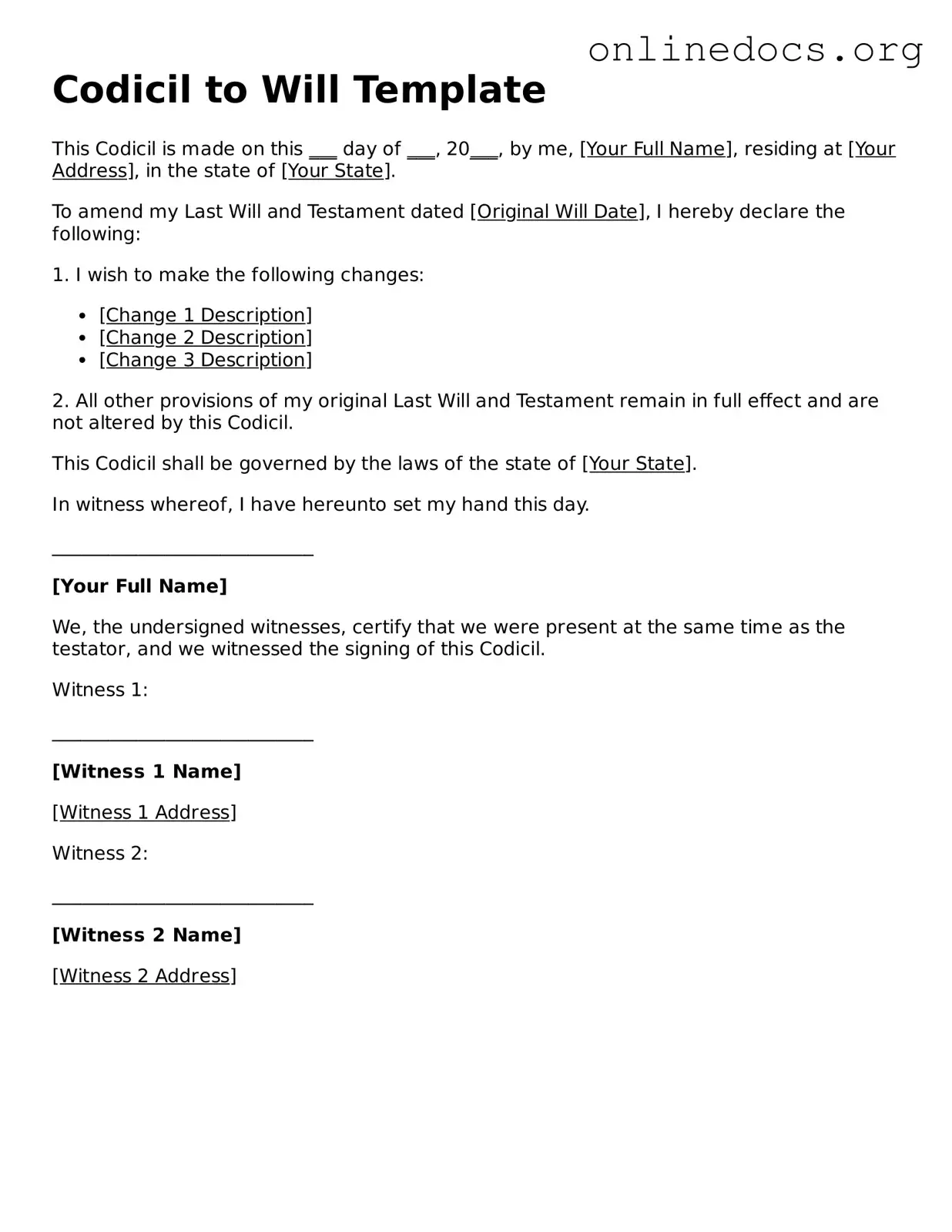The Codicil to Will form is similar to a Last Will and Testament, as both documents serve to outline a person's wishes regarding the distribution of their estate after their passing. A Last Will and Testament is a comprehensive document that details how assets should be divided, names guardians for minor children, and appoints an executor to manage the estate. The Codicil acts as an amendment to this original document, allowing individuals to make changes or updates without having to create an entirely new will. This is particularly useful for minor adjustments, such as adding or removing beneficiaries or changing the executor's name.
Another document similar to the Codicil is the Revocation of Will. This form allows an individual to formally cancel a previously created will. While a Codicil amends an existing will, a Revocation of Will completely nullifies it. This can be necessary when significant life changes occur, such as marriage, divorce, or the birth of a child. By revoking an outdated will, individuals can ensure that their current intentions are clearly documented and that there is no confusion about their wishes regarding asset distribution.
The Living Will is another document that shares some similarities with the Codicil. While a Codicil pertains to the distribution of assets after death, a Living Will addresses medical decisions during a person’s life, particularly in situations where they may be unable to communicate their wishes. Both documents reflect an individual's intentions and desires, but they serve different purposes. A Living Will specifies what kind of medical treatment a person wants or does not want, while a Codicil updates the instructions for how their estate should be handled after their death.
Creating a durable estate plan is essential, and understanding the components involved is crucial. A useful resource for guiding you through this process is the comprehensive guide to Last Will and Testament forms, which provides key insights into drafting your legal documents effectively.
Lastly, the Durable Power of Attorney (DPOA) is comparable to the Codicil in that both documents allow individuals to express their wishes regarding authority and decision-making. A DPOA grants someone the authority to make financial or legal decisions on behalf of another person if they become incapacitated. While a Codicil focuses on estate distribution, a DPOA ensures that a trusted individual can manage affairs during a person’s lifetime. Both documents are essential for ensuring that a person’s preferences are respected, whether in life or after death.
